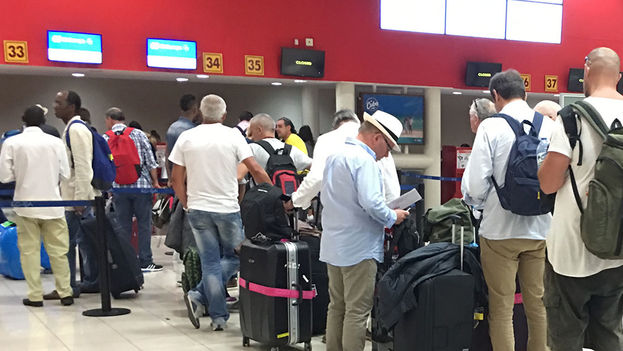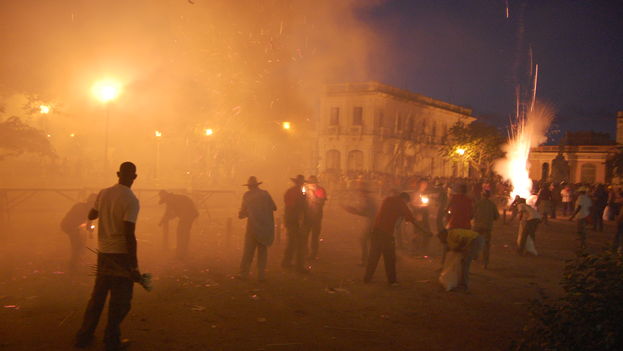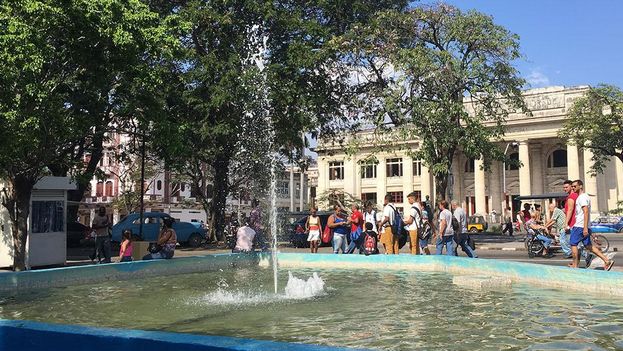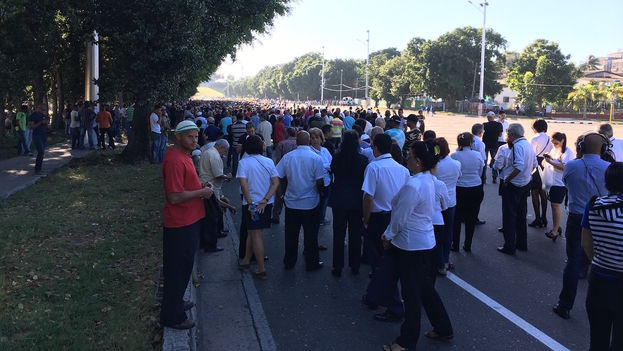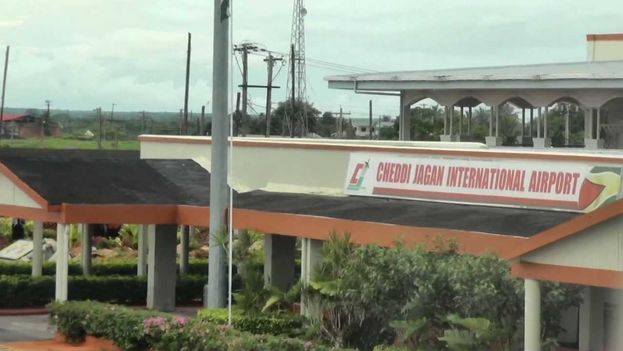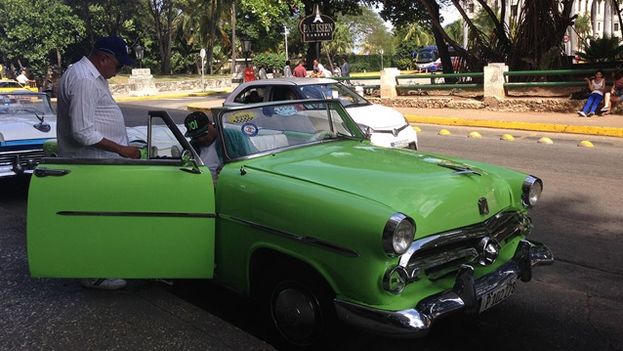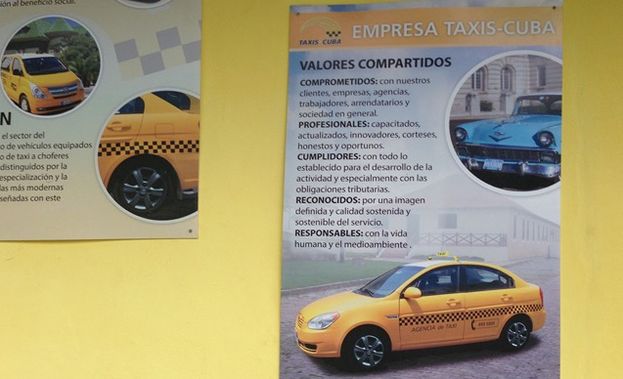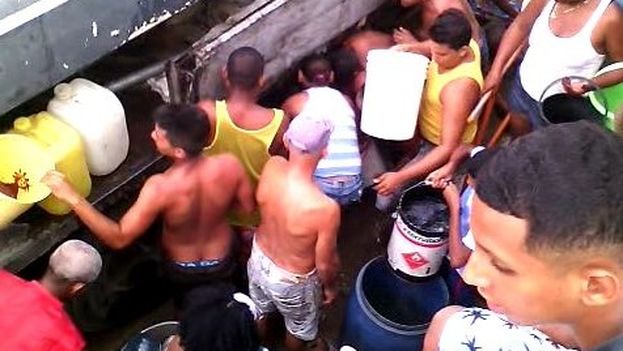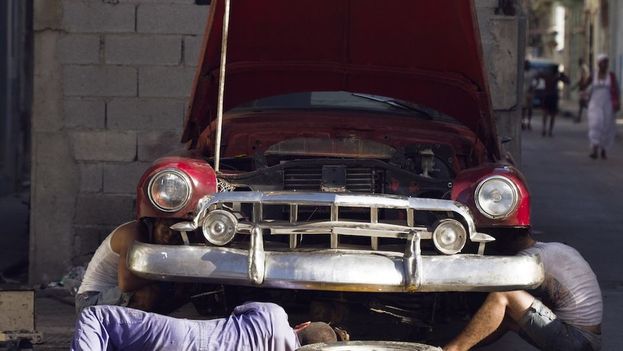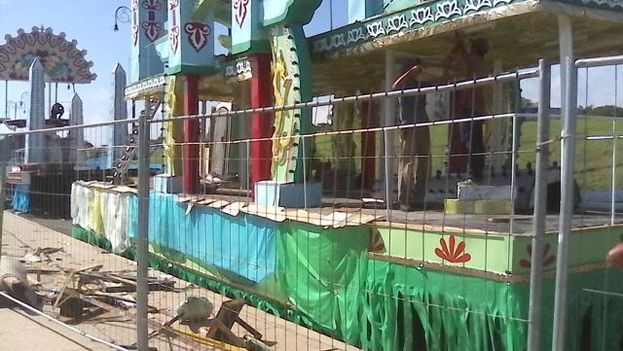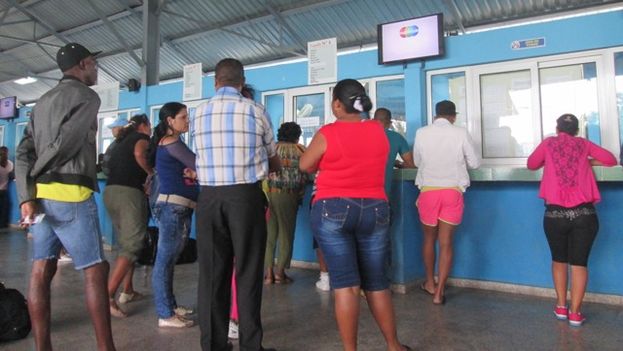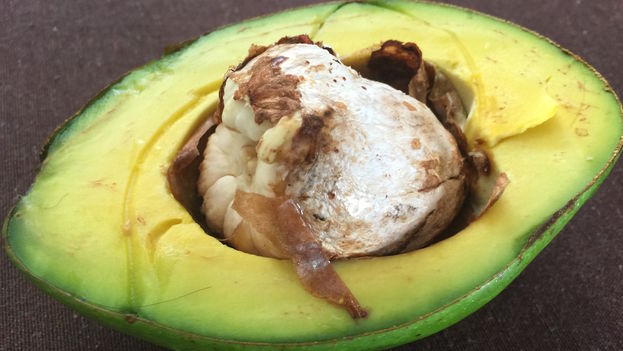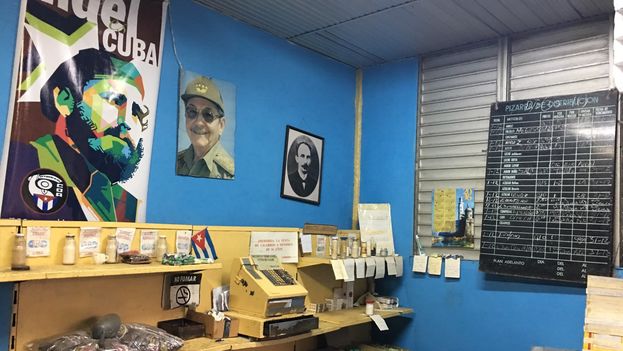
![]() 14ymedio, Marcelo Hernandez, Havana, 22 December 2016 — At the end of this month the ration market quotas for January 2017 will go on sale. Cubans who depend on products distributed at subsidized prices will gather outside the bodegas, in long lines, for the 55th anniversary of the ration book, whose elimination continues to be one of Raul Castro’s unmet projects.
14ymedio, Marcelo Hernandez, Havana, 22 December 2016 — At the end of this month the ration market quotas for January 2017 will go on sale. Cubans who depend on products distributed at subsidized prices will gather outside the bodegas, in long lines, for the 55th anniversary of the ration book, whose elimination continues to be one of Raul Castro’s unmet projects.
In 2014, the average monthly salary on the island increased by 24%, to 584 Cuban pesos (some 24 dollars). Despite this increase, many families still depend on the subsidized prices maintained by the ration card. Their income does not allow them to pay the prices in the supply-and-demand markets or in the retail network of stores in Cuban Convertible pesos. continue reading
Different analysts and official functionaries have warned that the elimination of the ration book could cause a fall in the standard of living in the most vulnerable sectors of the population, among whom are the retired and families who don’t receive any additional income beyond their state salaries.
Among the Guidelines approved by the Seventh Communist Party Congress, last April, it was agreed “to continue the orderly and gradual elimination of the ration book products.” However, so far, the proposal has not gone into effect, in part because of the poor economic development experienced by the country in recent years.
Cuba’s gross domestic product will grow only 0.4% this year, its lowest level in the last two decades, as recently confirmed by the Economic Commission for Latin America and the Caribbean (ECLAC). Faced with this reality, the government has not been able to improve people’s purchasing power or dismantle the rationed market.
The Government is faced with the dilemma of maintaining the enormous infrastructure and the hefty costs of prolonging the life of the ration book or suppressing it, with the consequent deepening of poverty for various social groups. Such a measure would have an undeniable political impact on a process that has been defined as a revolution “by the humble and for the humble.”
Officialdom has repeated on several occasions that it is preferable to “subsidize people rather than products,” but the rationed quota is still given to every citizen equally, even those who have reached an above average level of income. The practice has focused on removing products from the subsidized basic market basket.
Rice, grains, oil, sugar, salt, eggs, chicken and bread are some of the foods that are still subsidized, while other goods have been removed from the ration book altogether, including liquid detergent, bath and washing soap, toothpaste, beef and cigarettes.
During the 1970s and ‘80s it was virtually impossible to live without ration book products. This phenomenon resulted in, among many other ills, low internal migration and a greater control of the State over the citizens.
Currently, the mobility of the population to provincial capitals and especially to Havana has increased as a result of the easing of the policy on rental housing. The ability to purchase food and hygiene products outside the rationing system has also contributed to the phenomenon.
The emergence of a parallel market that includes state establishments and private bakeries has also been hugely important to the process of citizen independence. Ration book bread, a recurring theme in the “accountability meetings” of the People’s Power, a topic of critical analysis in the official press and a target of mockery for the majority of Cuban comedians, has lost its importance.
Families with better incomes have given up standing in the traditional lines to get bread for 10 centavos in national currency (less than one cent on the US dollar). They prefer to go to the private bakeries that offer a wide variety of products at unregulated prices.
The bodegas with empty shelves and a blackboard listing the products of the month have become, along with the old American cars that still circulate on the streets of the island and the billboards with political messages, among the photographic trophies taken by tourists as part of the social landscape of Cuba.
The disappearance of the ration book will have to wait until the completion of the gradual reforms announced by the authorities. There will probably be more who mourn its end than those who will celebrate it, but the day will come when some incredulous grandchild will listen to his grandfather repeat stories of “that era when everyone ate the same thing on the same day in the whole country.”

